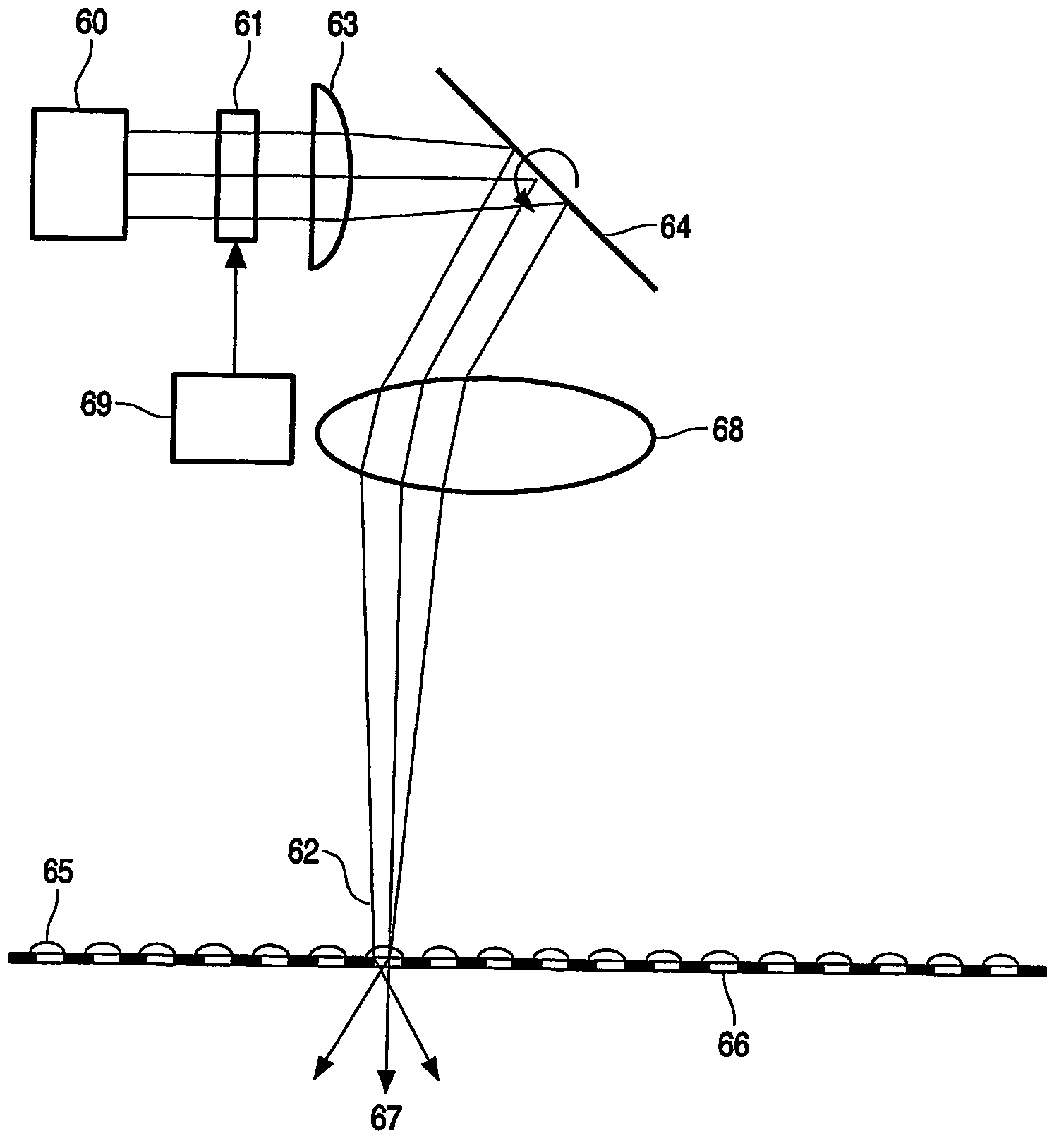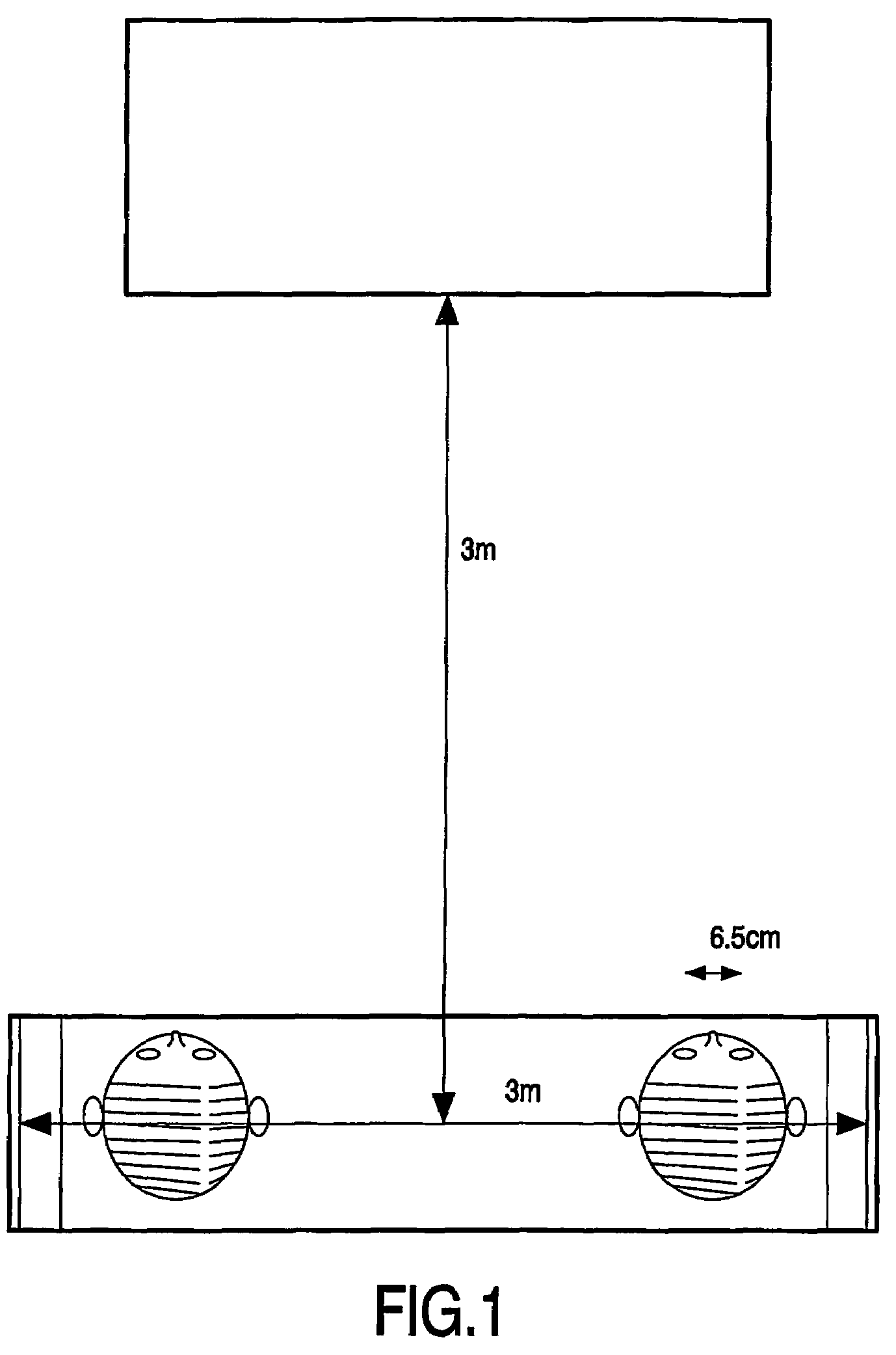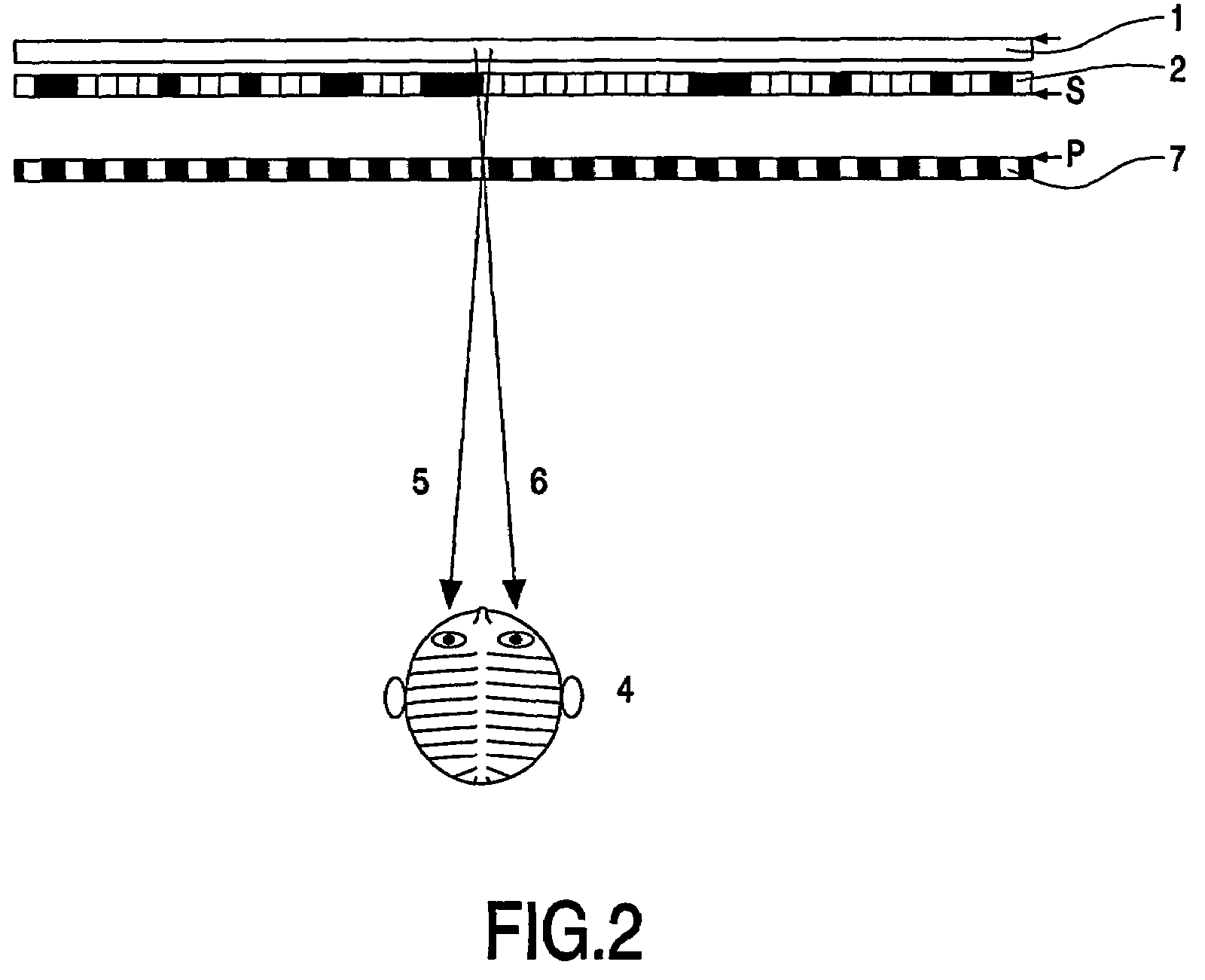Autostereoscopic display
a display and autostereoscopic technology, applied in the field of autostereoscopic display, can solve the problems of affecting the display effect, affecting the effect of the image, and the two images producing only a limited “look around” capability, so as to achieve the effect of improving efficiency
- Summary
- Abstract
- Description
- Claims
- Application Information
AI Technical Summary
Benefits of technology
Problems solved by technology
Method used
Image
Examples
Embodiment Construction
[0029]FIG. 1 illustrates a display device. For a three-dimensional television one needs a large number of viewing directions in which light is emitted independently. In a domestic application, the viewing distance is approximately 3 m and people sits on a couch that is approximately 3 m wide, see illustration 1. So, a viewing angle of at least 60-degrees is needed. Our eyes are positioned at 6:5 cm from each other. To arrive at different pictures for each eye, the display needs to emit light in at least 3 m / 6:5 cm=300 / 6:5=50 directions. To arrive at a three-dimensional picture without discontinuous transitions if one moves one's head, a three-dimensional television should emit light in much more than 50, say at least 100, directions.
[0030]FIG. 2 illustrates the basic principle of a parallax barrier splitting two stereo images. The vertical lines of two stereo images are alternatingly displayed on, e.g., a spatial light modulator 2 (e.g. a LCD) with a back light 1. The grating struct...
PUM
 Login to View More
Login to View More Abstract
Description
Claims
Application Information
 Login to View More
Login to View More - R&D
- Intellectual Property
- Life Sciences
- Materials
- Tech Scout
- Unparalleled Data Quality
- Higher Quality Content
- 60% Fewer Hallucinations
Browse by: Latest US Patents, China's latest patents, Technical Efficacy Thesaurus, Application Domain, Technology Topic, Popular Technical Reports.
© 2025 PatSnap. All rights reserved.Legal|Privacy policy|Modern Slavery Act Transparency Statement|Sitemap|About US| Contact US: help@patsnap.com



